|
Welcome
to the music section.
The first contribute to this section is from my dear brother Vagn with The History of
Blues.
He is member of a band called RUMOURS
so check out their great site here.
Download The History of
Blues.pdf (Adobe Acrobat Reader format) (291KB)
This document is written by Vagn Petersen,
all use of this document may freely be distributed and edited (AP).
Microsoft Word format is available if required.
The History Of Blues
The blues music has great importance for both the jazz- and the rock music and the
twelve-bar
bluesform has over the years been played in every possible way.
I will briefly explain what a twelve-bar bluesform is:
The I, IV and the V-chords are basic harmonium elements in blues. In a twelve-bar blues
the cords are split up on a certain way and even though the harmonies can vary a lot the
stem form is always the same. The harmonies and their duration are showed in the table
below. Every stroke (r ) states a beat.
It can maybe help your understanding if you imagine that every cord on the single bar
is played
on a rythmguitar. Notice that the most important shifts happened in fifth, seventh, ninth
and eleventh bar.
I
rrrr rrrr
rrrr rrrr
IV
I
rrrr rrrr rrrr
rrrr
V
I
rrrr
rrrr rrrr rrrr
The lyrics in the texts are normally that you repeat the first line and the B-line is
formed
as an answer or a deepening of the A-line:
(A) " I'm goin´ to the river, goin' to sit down on the ground
(A) I'm goin´ to the river, goin' to sit down on the ground
(B) And let the waves of the water, wash my troubles down."
Blues music is a music, which gets inspiration from personal experiences:
" A blues is about something that's real.
It's about what a man feels when his
wife leaves him, or about some dissa-
pointment that happens to him that he
can't do anything about."
(Memphis Willie B.) |
" Trouble … that's right. That's the one
solution. Trouble. You know you can
only express a true feeling if you're
sincere about it. You can only express
what happened to you."
(Henry Townsend) |
Country-blues
It will probably never be solved when the blues music really came into existence. It
happened in
a small area around the Mississippi-river called "the delta" where they grew
cotton. The early
blues with attachment to the black farm workers in the South was called country-blues.
In connection with the big interest for blues music at the late twenties several
record-companies made tours to the small towns in the South. The common instrument on
these records was the guitar and the music was usually executed by one or
two musicians and the song played an important part. Among the most important
country-blues musicians were Robert Johnson and Blind Lemon Jefferson.
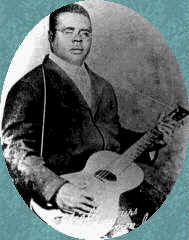
Blind Lemon Jefferson
( 1897 – 1929 )
|
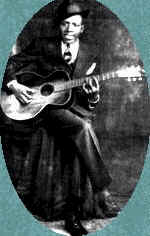
Robert Johnson
(1911 – 1938 ) |
City-blues
In 1920 the song "Crazy blues" was recorded with a young black singer, Mamie
Smith, who had
performed on cabarets in Harlem. The song became at once a success and the
record-companies discovered a big market for this form of "cabaret-blues". The
singer was accompanied by jazz-musicians and the music was performed by professional
composers.
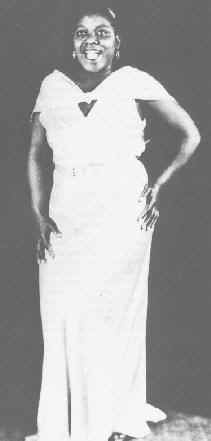
Bessie Smith
( 1894 – 1937 ) |
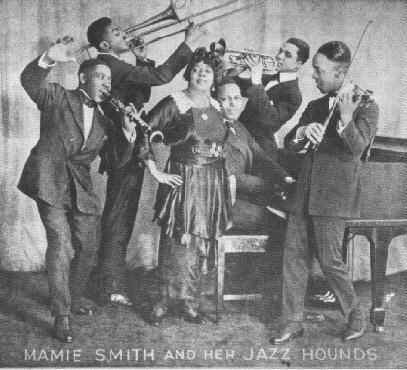
Mamie Smith
( 1883 – 1946 ) |
The most famous blues-singer was Bessie Smith who started her career in 1923.
She became the most wanted black blues-artist during the twenties.
It was almost exclusively the black public who bought blues-records. Therefore the record-
companies began to speculate in the black market and had catalogues under the name
"Race-records" exclusively intended to black record-buyers.
In the Southwest-States there were in the twenties a need for cheap working capacity
and
a lot of the farm workers went there from the Southeast-States. The blues music these
workers brought along became an essential part of the jazz music, which was played around
Kansas City. From here came one of the most considerable City-blues singers from the
thirties,
"Big" Joe Turner. He developed a special singing style - The shouting
blues - where the singer almost shouted the song something which could be
necessary because public-address system was not common.

"Big" Joe Turner
(1911 – 1985)
Rhythm-blues
In the thirties boogie-woogie also became popular. It is a piano style built on the
twelve-bar form blues music, where right hand makes improvisations in the treble and the
left hand makes a marked bass. The music is probably arised in work camps and small
communities in the South-States in an area stretched out between Florida and Missouri. Big
Joe Turner often played together with boogie-woogie inspired pianists in the late
thirties.
In the late thirties more Jazz-people began to work with swing-music, which was
directly inspired from blues music and was called rhythm and blues. In the late
forties the pianist and singer
Nat "King" Cole introduced with his camber-jazz trio a special intimate
form for swing-jazz blues,
Which later inspired Ray Charles.
.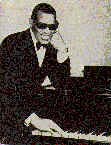
Ray Charles
( 1930 - ?)
Chicago-blues
In the years after the Second World War a radical reconditioning of the blues music
happened.
Muddy Waters who came from Mississippi developed in Chicago a way to transform the
country-blues instrumental technique to ensemble technique. His blues band was consisted
of two electric guitars, harmonica, piano, bass and drums. A line of the best Chicago
blues musicians were attached to the Muddy Water's Blues band.
In Texas it was Ligtnin' Hopkins and T-Bone Walker and in Detroit John Lee
Hooker, who developed the blues music.
The blues music became electrically amplified and the music developed a marked dance
rhythm which fitted the clubs in the black ghetto.
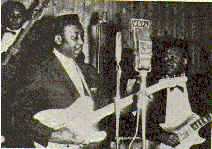
Muddy Water
( 1915 – 1982 ) |
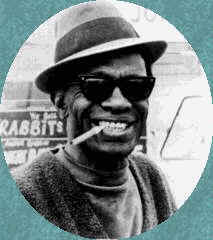
Ligtnin' Hopkins
( 1912 – 1982 ) |

T-Bone Walker
( 1910 – 1975 ) |
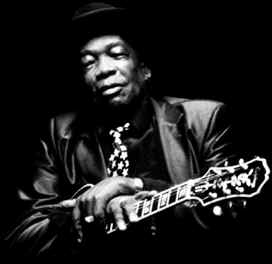
John Lee Hooker
( 1920 - ?) |
Blues and rock and roll
In the beginning of the fifties Riley B. King or B.B. King emerged. He developed
a new jazz/gospel/
blues style, which was called urban blues. His very sensitive and dramatic guitar
play cultured
a line of guitarists in the sixties.
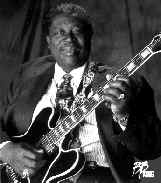
B.B. King
( 1925 - ?)
The black blues got a big public in the cities and the Chicago music became what you
today
describe as rhythm & blues. The texts became more out-turned and they borrowed from
jazz, boogie-woogie. Chicago-blues, rock & roll and pop music.
Especially two guitarists marks rhythm & blues of today. Their records were in the end
of the fifties sent out in million copy issues. They were of great importance to the early
English
rock music in the first half of the sixties.
Chuck Berry
He was influenced by Muddy Waters and T-Bone Walker. A lot of his compositions are
classics today "Sweet little sixteen, Johnny B. Good and Roll over
Beethoven".
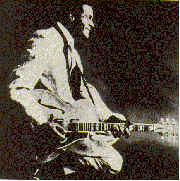
Chuck Berry
( 1926 - ?) |
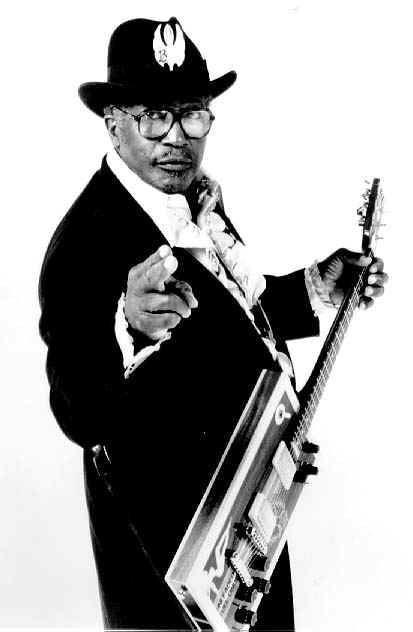
Bo Diddley
( 1928 - ?) |
Bo Diddley
His first record was also on initiative of Muddy Waters. He played blues with rumba
rhythms and wrote witty texts. Bo Diddley had great influence on British rock groups like Yardbirds,
Rolling Stones and Animals. They have all recorded some of Diddley's
compositions.
Today, there are especially many white blues musicians ready to carry on the tradition.
I can mention a lot of persons, who are very important to the blues music today. But I
limit it to Eric Clapton, Gary Moore and Johnny Winter, who are prominent
intermediaries for the blues.
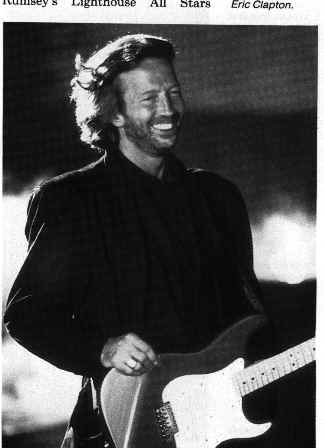
Eric Clapton
( 1945 - ) |
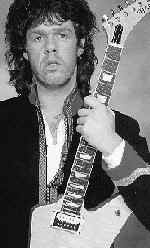
Gary Moore
( 1952 - ) |
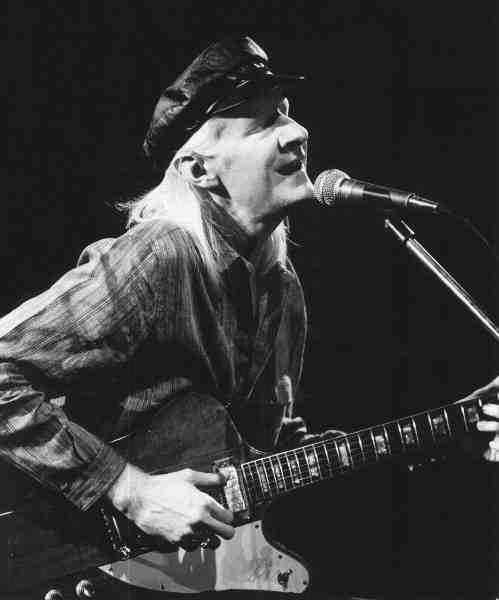
Johnny Winter
( 1944 - ) |

Vagn Petersen
( 1961 - ) |
|